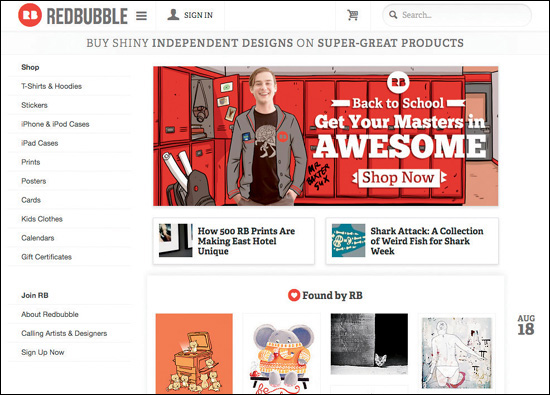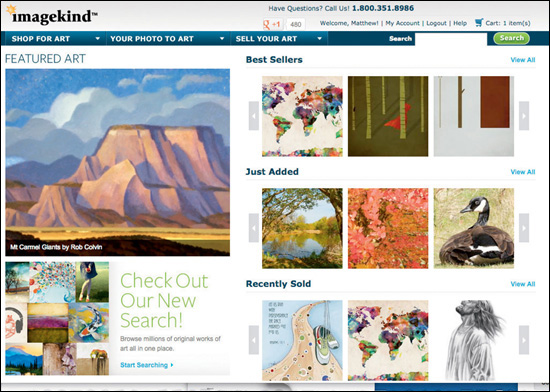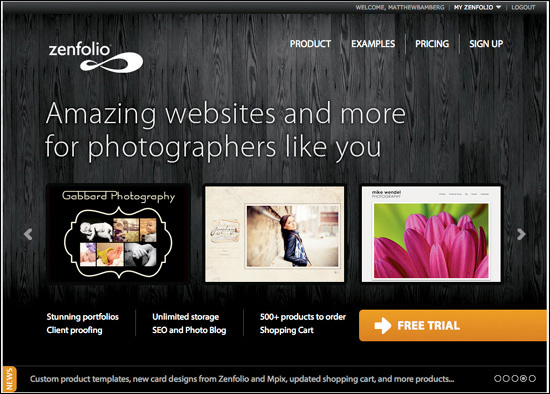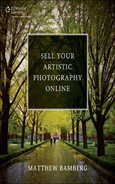4
Fine Art Photography Online
This chapter introduces you to online fine art photography so that you’ll have all the information you need to decide which website best meets your needs. This is a booming industry garnering much attention in the art world. It has affected the way in which art is sold, giving collectors a much wider choice of products to buy, from photographs adhered to various materials to a wide assortment of traditional framing.
The number of websites that permit you to upload your photographs to sell online is increasing. In Chapter 1, you learned about POD, or print on demand. Many photographers are now choosing that option because it leaves them more time for photographing and processing.
At this point you probably are wondering how you make money selling your photographs. The concept is pretty easy. First, you don’t have to pay anything. The online service gives you a price sheet to fill out, which is a simple form giving you the prices of the services with a place to input your markups.
For example, if someone orders a 24×36 print at Fine Art America, FAA charges the person ordering it the base price on your price sheet plus the commission you’ve added. For a 24×36 print, the base price FAA lists is about $45; over at Zenfolio it’s $47.
Note
Some POD websites offer sign-up with Facebook or Twitter, which means that all the information from those websites will be shown on the POD website.
Note
Base prices don’t vary much from one POD company to another.
One thing is for sure; there is no dearth of categories and genres under which you can submit your art. From the more traditional photography of Fine Art America to the offbeat at deviantART, any photography or digital art is fair game for selling.
Most POD websites list the primary categories (genres) in which to classify your art. The information that follows shows you interesting genres that include photographic images that appear on the home page and/or photography page. You’ll find some of the categories listed here.
Pay attention to each of these categories when keywording each piece of your work. The names of the categories can also be included as keywords.
The novel categories at POD websites include:
• Abstract Images without identifiable subjects/objects containing interesting designs. Aaron Siskind was a master in this genre of photography.
• Impressionism Art with patterns that represent a scene or subject, usually associated with painting (think Van Gough’s Starry Nights). Photographers create impressionist works using image-processing programs such as Photoshop.
• Nudes Not to worry about this category’s often explicit subject matter if it’s the kind of photography you do. There’s an option to block the images for children and workplaces in the platform.
• Still Life A form of photography whereby still objects fill the frame; it’s grown over the years because of its artful nature.
• Surrealism Dreamlike designs with or without subjects or objects (think Salvador Dali).
The following sections cover the more successful online services that you can use to sell your fine art.
RedBubble
Figure 4.1 Home page of the RedBubble website.

Source: redbubble.com
RedBubble’s focus is on the number of different items on which your artwork can appear (see Figure 4.1). Your artwork can be sold on T-shirts, stickers, iPad/iPhone cases, kids clothes, and calendars. Although photography can work here, graphic design is the primary craft that sellers offer.
One advantage of RedBubble is its ease of use; base prices with markup choices are shown on a simple price input page. The markups need to be inputted in percent and they are calculated and saved right after an image’s upload. This website is totally free to sell on.
The trick with this website is to find a set of designs that people would want to collect. For example, photographs of different vintage cars are shown in Figure 4.2.
Figure 4.2 Create images that people want to collect.

©Matthew Bamberg

©Matthew Bamberg
©Matthew Bamberg
Fine Art America (FAA)
Fine Art America (see Figure 4.3) deals in all of the visual arts; photography is just a portion of the art they deal with. This can be a disadvantage because sometimes it’s hard to determine whether a piece of art is a photograph or painting just by looking at it (thanks, in part, to the ability to digitally manipulate your photographs to look like just about any visual art medium).
Fine Art America is free, but this membership is limited. You are allotted only 25 prints to sell at any one time, giving limited choice to your potential customers.
Note
The best way to try FAA is to put some of your work for sale using the Free option. When a work sells, use that money to pay for a year’s membership.
The best feature of FAA is that its interface is easy to navigate and work with compared to some other websites, such as Artist Rising, Imagekind, and Zenfolio. Another Advantage of FAA is that buyers can choose from a number of different media for printing and a vast number of frames. FAA offers the option of putting your gallery on one of their websites or on your own website/blog (via HTML code clips). You can also opt for each upload to be published on Twitter and Facebook.
With a keen eye for helping artists market their work, FAA beats the competition hands-down. It offers you an opportunity to place various FAA keyword links on your blog(s) or website(s) in exchange for better placement of your photos when a visitor types the FAA keyword that you advertised on your website or blog. See Chapter 20 for more information about Fine Art America.

Source: Fine Art America
Note
Stay away from plastic frames, because if a collector buys a poorly framed/printed image, she is not likely to come back to buy another. The quality of the product looks cheap compared to the same print in a glass frame.
Imagekind
Very similar to FAA is Imagekind, one of six brands related to the online art business. Again, like FAA, Imagekind deals not only in photography, but in all sorts of visual media. It’s free also, but unlike FAA, you can sell as many photos as you want. The limitation comes in the number of galleries you are allotted, which, at three, isn’t enough for potential customers to see a good variety of focused photo-themed galleries, each of which contains a photo set that is alike in some way.
Also, the gallery limitation makes it difficult to manage a large portfolio that covers a wide range of photography genres if you choose to organize your photos by photography type. At $8/month for a pro account, you can get unlimited galleries and uploads. Not bad compared to other POD services.
Imagekind doesn’t offer any one unique perk that makes it stand out from the rest. The website is a straight-forward place to put your photos without much assistance in marketing or without much control of your photograph placements within search results. See Chapter 22 for lots more about Imagekind.
Figure 4.4 Imagekind deals not only in photography, but in all sorts of visual media.

Source: imagekind.com (Imagekind™, a subsidiary of CafePress)
Zenfolio
Zenfolio (see Figure 4.5) calls itself a photo-hosting account, meaning that you get a webpage for your photographs from which you can sell and market them. Unlike Fine Art America and Imagekind, both of which have the option of choosing a free service, only the first two weeks at Zenfolio are free. After that, the cost is $30 for the lower-grade membership, which is more than adequate for most photographers.
The best feature (or shall I say lack of a feature) of Zenfolio is that it deals only with photography and digital art—no paintings or other art will interfere with the photography shopper’s experience. Two more advantages of Zenfolio as opposed to other POD services are:
• You start off with your own webpage and can upload TIFF files in addition to the usual JPEG.
• Zenfolio has a list of vendors with which it works for the creation of the product. Each vendor and their products are described in detail so you can do a quality check on your own without having to order a print to determine if it’s good or not (as you do with FAA and Imagekind).
Zenfolio’s website is organized with a focus on the viewer so that your images are presented in an aesthetic and informative way. The appeal of the website is enhanced by the artist’s control over the font style and size of the captions in a menu bar for each photograph. Also, there is a search bar that visitors can use to find images on your website. The results show up on a black background with styled captions.
Other POD websites include SmugMug (only fee-based accounts), Artist Rising (free and fee-based accounts; see Chapter 21), and deviantART (free and fee-based). Each has a different focus. Although SmugMug permits you to sell your photos, it’s more of a photo-sharing website. Artist Rising is a POD site á la Fine Art America, but with a more complicated interface. deviantART is a kind of alternative art website with some photography.
Note
You can sell digital copies of your work at deviantART and SmugMug.

Source: zenfolio.com

